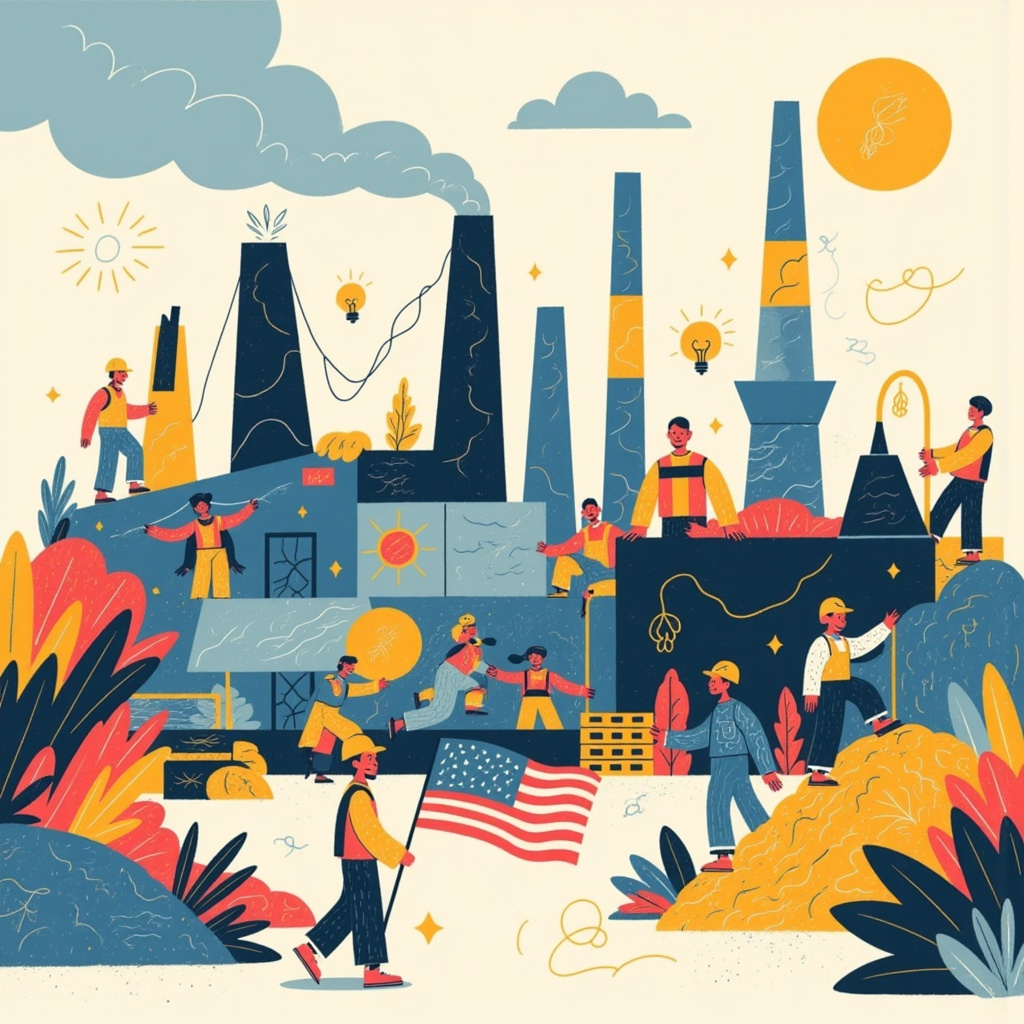Manufacturing - USA vs China
If you read glossy reshoring headlines over the last few years, you might believe USA manufacturing is faster, more flexible, and nearly cost competitive to China, but that is not what most consumer brands experience. In most product categories, the United States has slower manufacturing timelines, quality is variable from shop to shop, and the unit cost is materially higher than China. You can still win domestically in narrow situations, however you need to know exactly which products, which processes, and why the numbers look the way they do.
Below is a direct, data backed look at what really works in the USA compared to China, with concrete product examples that are actually made here, and an explanation of how cost, timelines, order quantities and quality compares. For support on design for manufacturability and region by region quoting, reach out to us at Klugonyx and we'd be happy to get you FREE quotes.
Where USA Manufacturing Can Work (with real products you probably know)
Domestic speed tends to be real only when the process is machine driven with quick changeovers, and where you can avoid the ocean leg entirely. Here are specific US made examples that fit those constraints:
- CNC machined parts. Leatherman multi tools in Portland, Really Right Stuff camera heads and plates, and Wolf Tooth Components bicycle parts are all built around CNC capability in the United States. These are precision products with relatively compact part sizes, strong brand margins, and customers who accept premium pricing
- Laser cut and bent sheet metal and simple welded frames. Rogue Fitness fabricates power racks and stands in Columbus, which is an excellent example of laser cutting, bending, and welding at scale. Big, heavy items are expensive to ship trans Pacific, so making them near the customer can offset higher labor rates
- Thermoformed housings and trays. WeatherTech FloorLiner mats are a well known domestic thermoforming success story, where tooling is manageable, part geometry is sheet based, and the product is bulky to ship overseas
- Rotational molding. Step2 makes large hollow toys and ride ons in Ohio, and rotomolded coolers from brands like Grizzly are made in the USA as well. These parts are large and mostly air, so freight from Asia can erase a cost advantage quickly
- Bridge tooled injection molding. Nalgene Tritan bottles, Tervis classic tumblers, and Pelican protective cases are US molded reference points. In many consumer categories the best domestic tactic is aluminum or modular base tooling to validate a SKU, then a move to multi cavity steel in China when volumes justify it. Public manufacturing guides show aluminum mold options starting around the low thousands of dollars, with speed advantages over steel, while steel tools and higher cavitation drive larger budgets and longer schedules
These examples prove that the USA can deliver strong products. They also prove something else. Every item on that list either carries premium positioning, benefits from large and heavy geometry that is painful to ship across oceans, or uses a process that is highly automated. That pattern matters.
Where the USA Struggles with Manufacturing
High touch sewing, plush, multi-step soft goods with dozens of operations, complex toys that rely on many sub suppliers, and commodity electronics that live inside the Chinese component ecosystem rarely make sense to make domestically in regards to cost or timelines. Even if a US shop accepts the work, you will often wait to get on the schedule, you will pay more per unit, and you will still need to import many inputs. China’s upstream network density and labor arbitrage still dominate these categories.
Is the USA Faster at Production?
Much of the perceived speed advantage comes from avoiding ocean shipping. Flexport’s Ocean Timeliness Indicator has recently shown China to US West Coast around 32 days and China to US East Coast around 54 days, and that is only transit time. If you build domestically, you remove that whole calendar block and the customs step, which can be a real advantage in some cases.
Of course, a domestic shop still needs to quote, schedule, fixture, and make your products. When US capacity is tight, lead times stretch, and any speed edge disappears. You cannot assume faster just because it is local, you have to confirm the shop’s actual availability.
Why Are USA Unit Costs Higher?
- Labor rates are higher. Hourly wages, benefits, training, and overtime drive the shop rate on machines and manual operations. China’s labor costs have risen, yet Asia still enjoys a large labor advantage in many categories, and China continues to invest heavily in automation which amplifies output per worker. The International Federation of Robotics reports that Asia absorbs the majority of new industrial robot deployments, and media and trade coverage repeatedly cite China’s leadership in annual installations
- Overhead and compliance. Environmental health and safety standards, insurance, taxes, permitting, and building costs add to the hourly burden rate in the United States. None of these make parts directly, but every hour on your job has to cover them
- Scale and network effects. China has clusters where mold builders, platers, fastener suppliers, resin distributors, and packaging plants sit close together. That shortens internal supply chains and enables competitive quotes. In the USA, a shop may outsource plating to another state, wait for resin deliveries, and ship parts across the country for finishing, which adds time and cost
- Tooling and changeovers. Setup is not free. Tooling, fixturing, and programming time must be paid for somewhere. Service bureau resources commonly show aluminum injection molds starting near one to several thousand dollars for simple tools, while complex steel tools run five figures and above. If your design needs multiple cavities, tight tolerances, or complex side actions, your upfront cost climbs quickly
- Freight and duties can flip the equation, but not always. Section 301 tariffs still hit many China origin consumer goods, and there have been new or proposed changes in 2025 policy. Those duties, plus ocean freight and carrying cost, can narrow the gap between a domestic quote and a China landed cost, but they rarely eliminate it for labor heavy items. You must model your landed cost with the current tariff schedule before you decide
Why Do USA Factories Often Ask for higher Order Quantities?
There is a misconception that US shops commonly accept tiny orders. In reality, factories set production minimums so the math works and they can stay profitable.
- Setup amortization. Every process has non recurring costs, for example programming a mill, changing over a press, building fixtures, or qualifying first articles. If a shop runs only a few dozen parts, those setup hours dominate the quote unless the unit price is very high. Higher MOQs spread those costs over more pieces. Standard operations and buyer education resources explain that MOQs protect factory profitability by covering setup and keeping lines efficient
- Material minimums and supplier rules. Upstream resin, sheet, and hardware suppliers often have their own minimums. A small order may force the factory to buy more raw material than your job needs, which means they need a higher MOQ or they need to price in leftover stock risk
- Scheduling reality. If a shop is booked, they prefer jobs that keep a machine busy long enough to justify a changeover. Very small batches burn scarce setup capacity. A higher MOQ is a screening tool that keeps the schedule viable
Put simply, MOQs are not a sign of greed, they are how factories keep the lights on. While top China's factories will request higher MOQs, there are many that will accept smaller order quantities in the hundreds of units (product dependent). Regardless, all factories are optimizing for scale and domestic factories have a harder time making money on short runs that do not even cover the setup costs.
Production Quality - China vs USA
Quality is a function of process design, DFM, clear documentation, and consistent inspection, not so much geography. China will deliver excellent quality when you bring clean CAD, realistic tolerances, and strong QC, just as US factories can, so in this regards, domestic shops are usually on par. The variability you see on the ground usually correlates with how well the product was engineered for the chosen process and how mature the supplier is for that exact category.
At Klugonyx, we push Design for Manufacturing before you place a purchase order. We remove over tight tolerances, add draft, standardize fasteners, and reduce secondary operations so any factory has an easier job. Start with Engineering to de risk the design, then get apples to apples quotes across regions.
USA vs China Manufacturing - Summary
When USA manufacturing works, it works because the process is machine led, the product is bulky, or the brand can absorb a premium. Quality is not guaranteed, and scheduling can take longer than expected. Costs are higher for structural reasons, labor, overhead, scale, and setup, and MOQs reflect the math a factory must do to survive.
China's speed and quality is unmatched across nearly all product categories. The stereotype from the early 2000's that China was only capable of producing low-quality goods is no longer relevant. With the right design discipline and supplier, China delivers excellent quality, broad capability, and competitive cost. The tradeoff is a longer calendar and tariff exposure, and those need to be modeled against current policy. The official Section 301 pages and recent Federal Register notices confirm that duties remain a moving part of the equation in 2025.
If you want an actionable plan, start with a DFM review via Klugonyx Engineering, then we will provide you with manufacturing quotes so you can compare real landed costs, realistic MOQs, and realistic calendars. If logistics is your pinch point, pair the decision with a strong freight forwarder and customs broker so you do not lose the weeks you fought to save in production.




